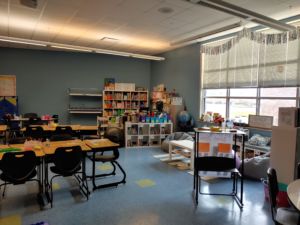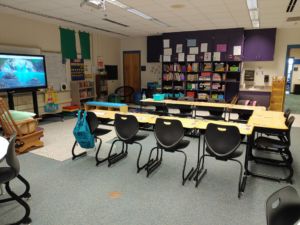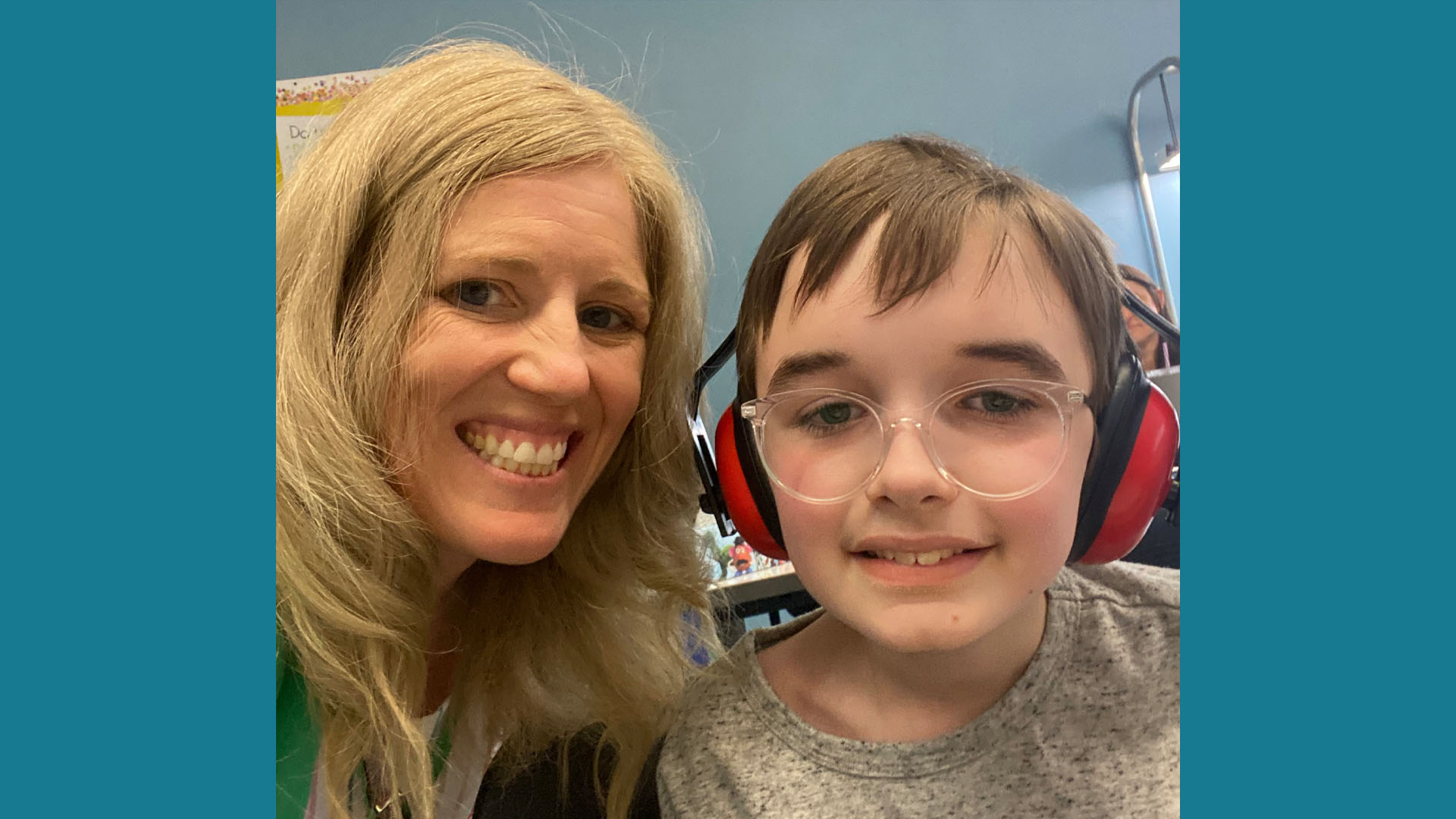 One of the biggest questions parents ask special education teachers is how to transition our students with special needs to new buildings. “Transitions are hard for everybody,” says David Anderson, Ph.D., a clinical psychologist from the Child Mind Institute. “One of the reasons why transitions may be hard is that we’re often transitioning from a preferred activity – something we like doing – to something that we need to do.” For students with special needs, it is extremely hard.
One of the biggest questions parents ask special education teachers is how to transition our students with special needs to new buildings. “Transitions are hard for everybody,” says David Anderson, Ph.D., a clinical psychologist from the Child Mind Institute. “One of the reasons why transitions may be hard is that we’re often transitioning from a preferred activity – something we like doing – to something that we need to do.” For students with special needs, it is extremely hard.
Why is transition so hard for kids with special needs?
Children with special needs can at times have trouble labeling their emotions and feelings. They know they are upset, but they don’t know why, or can’t express why. Transitioning usually involves big emotions, and kids with special needs can’t express all the things they are feeling. Some children such as kids with spectrum disorders very much have a routine in the building they are in and that will change when they have to move to another school. Students who have autism can find the world to be a confusing place, so they crave a familiar environment. Children who have ADHD have fewer neurons in the reward centers in their brains, so if they feel comfortable in the building they are attending they will have a harder time leaving that building. Children with ADHD also have less wiring in their brains for the portion which handles control of emotions, so their emotions are bigger than other students when they are upset about something such as leaving a preferred building. I know for my students who have cognitive impairments, it’s the timing that is the most confusing. They know they are leaving, but they can’t wrap their minds around when it is happening. They know they are in their fourth-grade year, but when told that they are moving up in August, they are like “when is August?” Time does not mean anything to them.  Our youngest children in developmental preschool will also have a big transition to kindergarten. The preschoolers go from small classes with lots of support, to full kindergarten classrooms with one teacher. The expectations jump as well. Developmental preschools in most districts are usually just 3 hours a day. That jump to full-time kindergarten with the added academic responsibilities can make for hard days for children (and parents). Changes in state law (in Indiana) have also not helped with the transition process. Students are now allowed to keep a developmental delay (DD) label until they are eight years old, versus in the past when that label was dropped by age five. By keeping the DD label, some of our students who need the most support are not getting them because they are placed in a program that doesn’t support their high needs.
Our youngest children in developmental preschool will also have a big transition to kindergarten. The preschoolers go from small classes with lots of support, to full kindergarten classrooms with one teacher. The expectations jump as well. Developmental preschools in most districts are usually just 3 hours a day. That jump to full-time kindergarten with the added academic responsibilities can make for hard days for children (and parents). Changes in state law (in Indiana) have also not helped with the transition process. Students are now allowed to keep a developmental delay (DD) label until they are eight years old, versus in the past when that label was dropped by age five. By keeping the DD label, some of our students who need the most support are not getting them because they are placed in a program that doesn’t support their high needs.
What can parents do to help with the transition?
The number one piece of advice I give parents when it comes to transition is for them to keep a positive attitude. It helps tremendously with students when they see their parents embrace the change of a new school. I tell the parents that it’s okay for them to be terrified of the change, but to never let their child know their true feelings. I always tell the parents to be honest with their child; however, keep it positive, such as “it’s okay to be scared to go to a new building” or “everyone feels that way at one time or another.”  Parents can help with transitions to a new school by starting early with their discussion of the new school. They can help by driving by the new school (if it is a new building) or even letting the kids play on the new school’s playground. Parents should also try to make attending the open houses for the new school a priority. It will help the child to be in a new environment with the support of people they are familiar with and feel comfortable with sharing their emotions. For students who have IEPs, parents should request a transition conference. They are especially important if your annual case review happens before December. Parents can call a case conference whenever they want to during the year. Transition conferences are important because they allow the teacher of record for the following year to attend, and it allows the parents the time to get to know the new teacher, as well as get their questions answered by the teacher who will be working with their child. Depending on the age of the child, they would be able to attend the meeting as well and get their questions answered by their teacher.
Parents can help with transitions to a new school by starting early with their discussion of the new school. They can help by driving by the new school (if it is a new building) or even letting the kids play on the new school’s playground. Parents should also try to make attending the open houses for the new school a priority. It will help the child to be in a new environment with the support of people they are familiar with and feel comfortable with sharing their emotions. For students who have IEPs, parents should request a transition conference. They are especially important if your annual case review happens before December. Parents can call a case conference whenever they want to during the year. Transition conferences are important because they allow the teacher of record for the following year to attend, and it allows the parents the time to get to know the new teacher, as well as get their questions answered by the teacher who will be working with their child. Depending on the age of the child, they would be able to attend the meeting as well and get their questions answered by their teacher.
With the right support and planning, students (and parents) can make the transition process as stress-free as possible.
What can teachers do to help with the transition?
There are so many ways that teachers can help with the transition process. One of the first ways is to schedule a field trip to the new classroom. This is very easy to do if your students are in a specialized program such as Functional Academics or Lifeskills. The first step in this process is to have the teachers of the new school first meet their new students in your classroom. This is less stressful for the students because they are on their own turf. Next, plan a time to go over to the new classroom. We like to make sure it is as stress-free as possible. I like to take the kids over before the whole school goes because I can usually then pinpoint the issues they might have before the parents take them over for an open house. The incoming teachers usually meet us for a tour of the school, and then we go to their classrooms where the kids get to see their friends from the prior years. Depending on the year, we have had the kids eat lunch at their new school and attend a special’s class. We also try to plan some fun summer activities for both classrooms so that the kids and the parents can meet each other in a less structured setting. We will do picnics at the park as well as summer meet-ups at some local playgrounds.  Another way teachers can help students with transitions is using a book creator app or website. I like the website bookcreater.com. It is free and very user-friendly. There are so many ways you can use it. Depending on the ability level of your students, they could create their own books about their new classrooms. If your students need more scaffolding, you could write a class book with the teacher modeling and typing. The nice part is the book becomes like a personalized social story for the student. Whenever they get anxious or nervous they can reread their book. They can also share it with other students and their families. With the right support and planning, students (and parents) can make the transition process as stress-free as possible.
Another way teachers can help students with transitions is using a book creator app or website. I like the website bookcreater.com. It is free and very user-friendly. There are so many ways you can use it. Depending on the ability level of your students, they could create their own books about their new classrooms. If your students need more scaffolding, you could write a class book with the teacher modeling and typing. The nice part is the book becomes like a personalized social story for the student. Whenever they get anxious or nervous they can reread their book. They can also share it with other students and their families. With the right support and planning, students (and parents) can make the transition process as stress-free as possible.
Resources
Please login or register to claim PGPs.
Alternatively, you may use the PGP Request Form if you prefer to not register an account.



